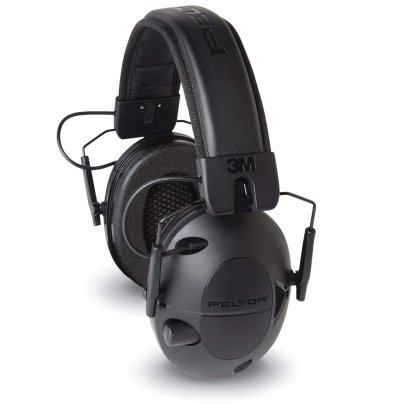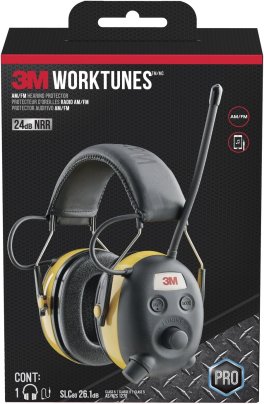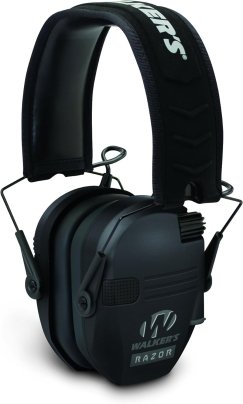
If you have sensitive ears, want to drown out the noise, work in construction, or hunt, you should make hearing protection a priority. Whether it’s a sturdy pair of earmuffs, headphones, or earplugs, they keep your eardrums safe from loud noises. To help you choose the best hearing protection, we’ve put together a list of the best hearing protection to check out.
Summary List
- Best Overall: Peltor Sport Tactical 100 Electronic Hearing Protector
- Best Value: 3M WorkTunes Connect Hearing Protector
- Honorable Mention: Walker’s Razor Slim Electronic Muff
- Honorable Mention: Decibullz Custom Molded Earplugs
- Honorable Mention: Band Lightweight Silicone Earplugs
- Honorable Mention: 3M Pro-Grade Noise-Reducing Earmuff
- Honorable Mention: Prohear 037 Bluetooth Headphones
- Honorable Mention: ISOtunes LINK Bluetooth Hearing Protection
Best Hearing Protection: Reviews & Recommendations
Best Overall
Peltor Sport Tactical 100 Electronic Hearing Protector
Best Value
3M WorkTunes Connect Hearing Protector
Honorable Mention
Walker’s Razor Slim Electronic Muff
Honorable Mention
Decibullz Custom Molded Earplugs
Honorable Mention
Band Lightweight Silicone Earplugs
Honorable Mention
3M Pro-Grade Noise-Reducing Earmuff
Honorable Mention
Prohear 037 Bluetooth Headphones
Honorable Mention
ISOtunes LINK Bluetooth Hearing Protection
Our Verdict
To better protect your ears and hear more clearly on the job, consider electronic earmuffs such as the Peltor Sport Tactical 100 Electric Hearing Protector.
You can also save a bit of cash and check out the 3M WorkTunes Connect Hearing Protector for its high noise reduction rating and lower cost.
Tips
- To help reduce loud noises, select a brand of safety earmuffs that let you play or stream music.
- Brightly colored headphones will be more visible and will allow other people to see you better. This is very useful for contractors or those who work in construction.
- There are several types of hearing protection, such as earplugs, headphones, earmuffs and semi-insert earplugs. Earplugs are typically made out of a moldable foam material that can be inserted into the ear canal, while muffs and phones go directly over your ears.
- Many headphones are foldable and can be fit into a compact space for added convenience.
- Ear protectors should be comfortable so look for ones with large padded earpieces that act as protective ear cushions. By using the adjustable headband, they should be able to conform to any size head with ease.
FAQs
A: When you are choosing hearing protection, consider the noise levels that need to be filtered out. For instance, a conversation is about 60 decibels (dB), while sounds at 85 dB or above are considered dangerous for your ears. Heavy machinery, motors, and construction sites tend to be between 70 to 90 dB. Mowing the lawn or riding a motorcycle can reach up to 120 dB. Gunshots are rated in the 140s and maybe even louder at an indoor shooting range.
A: For more robust and heavy-duty protection like headphones or muffs, keep them in a case when they are not in use. If you notice any cracking or splitting in the earmuffs, you should replace them. Foam earplugs tend to not last as long and may only last a few hours at most. They aren’t particularly comfortable and can deform more easily. They should come with a case, and make sure your hands and ears are clean so the product lasts longer.
A: If you work around a lot of loud hazardous noises, you should have your hearing checked annually. If you spend long periods of time around dangerous sound levels, it could lead to hearing damage. You should also get your hearing checked if you develop consistent ringing in your ears. This may be tinnitus, and you should go to the doctor immediately.










